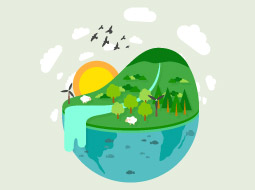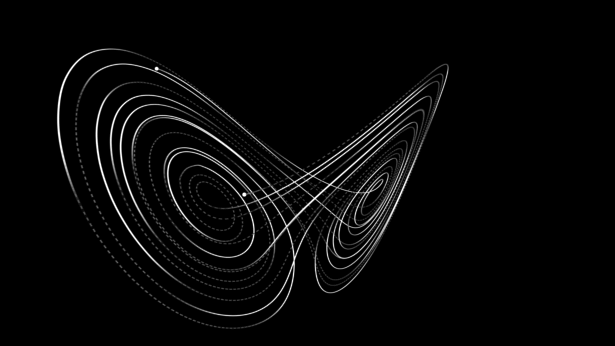Alice in Wonderland demonstrates the need to separate the human world from the world of the imagination and, in so doing, argues for the separation of human and nonhuman nature. According to Deborah Ross, this bifurcation extends to the conflict between rational control and irrational imagination (54). In Alice in Wonderland, unlike The Adventures of Ichabod and Toad, the animal world is the treacherous and irrational world, and the human world is rational, peaceful and calm. The film opens on the human world, a pastoral scene with shade trees and a lake with swans where Alice, “a rosy-cheeked, ruby-lipped darling right off Mr. Disney’s drawing-board, a sister of Snow White, Cinderella, and all the fairy-tale princesses he has drawn” (Crowther “Disney’s Cartoon” 12) throws a garland of flowers down from her tree limb onto her governess.
This secure space is disrupted when Alice and her kitten follow a talking rabbit into his rabbit hole, an animal world of imagination constructed as dangerous and frightening. On her journey, she encounters a beach where oysters are eaten by a carpenter, talking and singing flowers who deride her as a weed, an opium-smoking caterpillar who (as a butterfly) tells her about a magic mushroom, a Cheshire Cat, and the Mad Hatter and Door Mouse and their unbirthday party.
That sense of danger culminates in Alice’s encounters in two settings: a mystic forest and an evil queen’s maze. In the mystical Tulgey Woods, Alice encounters walking eyeglasses, honky horn ducks, frog drums and cymbals, umbrella dodo birds, digging shovel birds, cage-bird finches, and a pencil bird that shows her a path until a broom dog sweeps it away: “If I get home I shall write a book about this place,” she says, and as she cries, the moon transforms into the Cheshire Cat, causing Alice to exclaim that she must leave this dangerous world: “I’m through with rabbits. I want to go home,” she says, and the cat opens a door in his tree and shows her the queen’s maze, the last of the dangerous settings Alice must traverse. The maze is a short cut, and she takes it to group of walking playing cards, who are painting roses. Alice is put on trial when the queen accuses her of lifting her skirt, but the animals, who had earlier confused Alice, help her escape. “Today is your unbirthday, too,” they tell the queen and roll out an unbirthday party.
Alice must use elements of the dangerous world to escape it. She eats part of the mushroom she saved in her pocket and grows so tall she must leave the courtroom immediately. Alice fights back with new stature but grows small again. She calls the queen a fat tyrant, and the queen yells, “Off with her head.” Alice runs through the maze with black and white cards chasing in an amazing effect. She passes each of the parts of her journey in Wonderland: the circle of birds on the shore, the tea party, the caterpillar, and the doorknob.
In clear opposition to the novel from which the film was adapted and a reinforcement of the bifurcation between rational human and imaginative nonhuman worlds, Alice is saved, according to Ross, “not by facing [the cards] down with dawning maturity and confidence, like the ‘real’ Alice, but by waking up” (57). She sees herself asleep through the keyhole, and in a dream has a spiral effect and wakes up, reciting the caterpillar’s crocodile poem. The governess tells her to “come along. It’s time for tea,” and Alice goes willingly, glad to escape the danger of the animal world where walruses eat oysters presented as babies in bonnets, no matter how imaginatively constructed, for the safe human world in which she lives. Alice in Wonderland foregrounds the need to separate human and nonhuman nature, painting a negative picture of an animal world filled with terror and danger, without providing a space in which environmentalism and animal welfare can connect.






